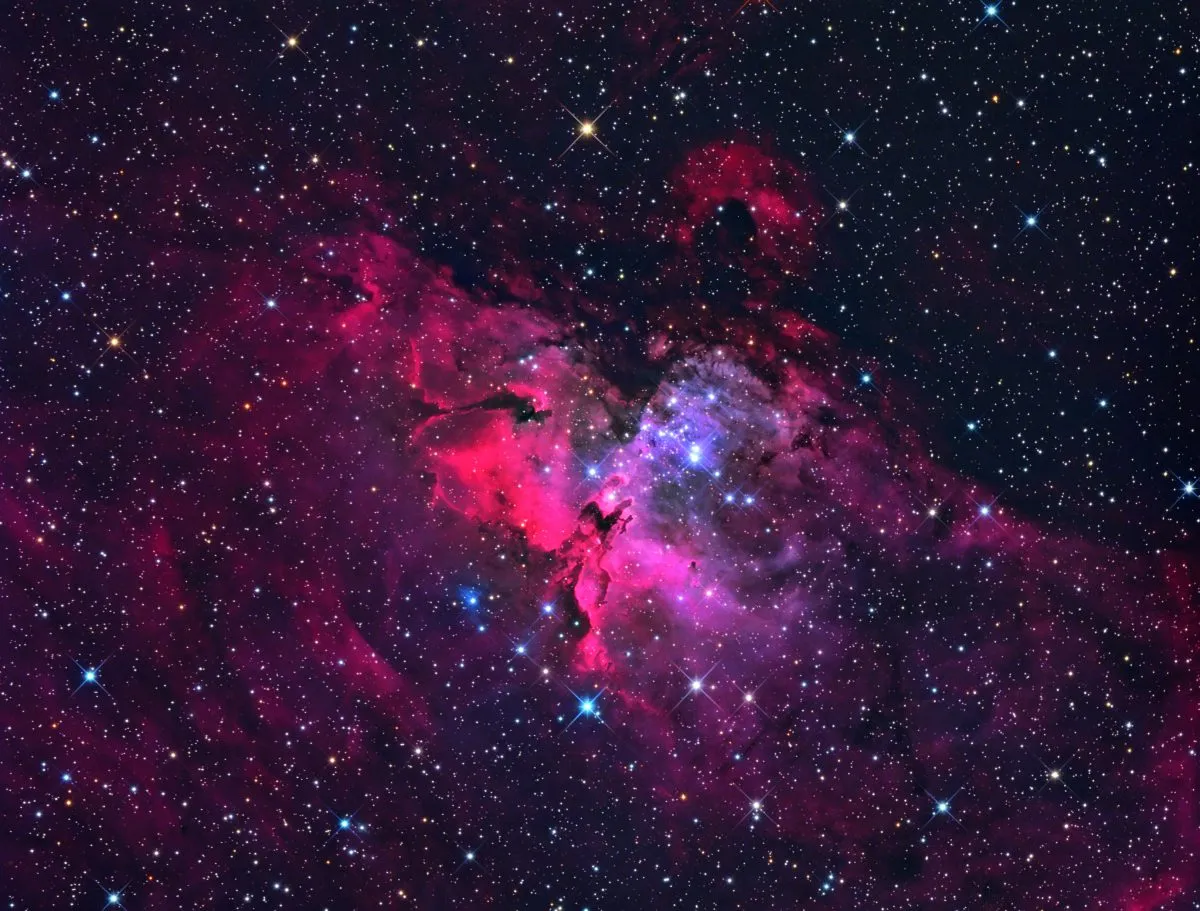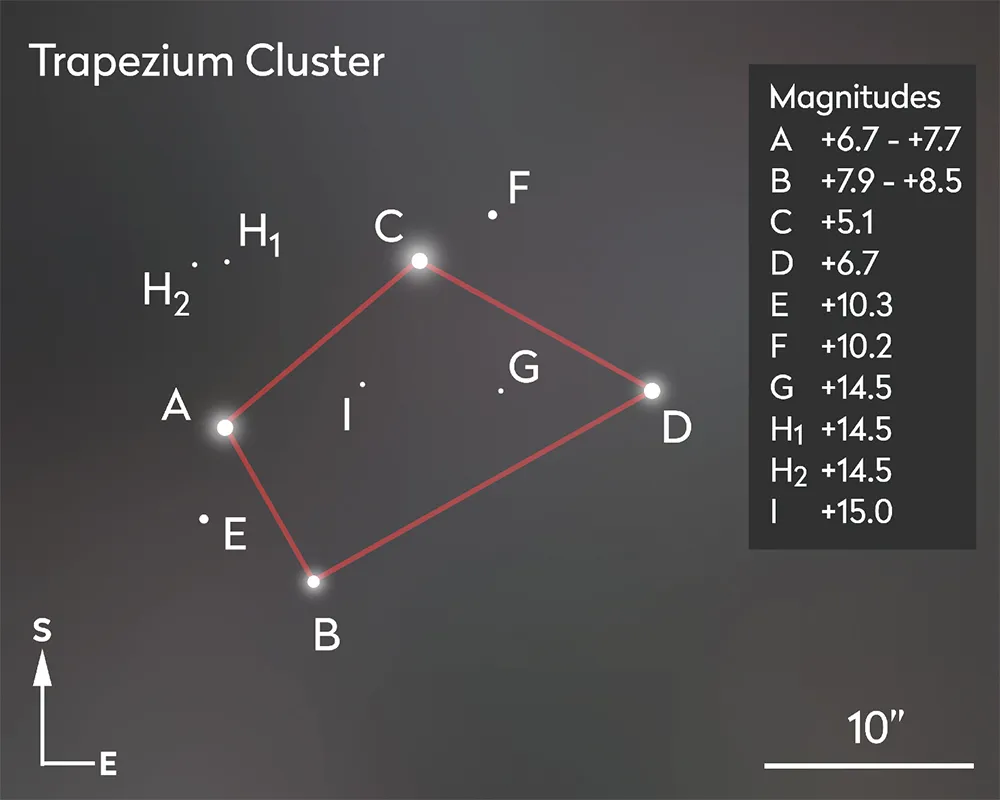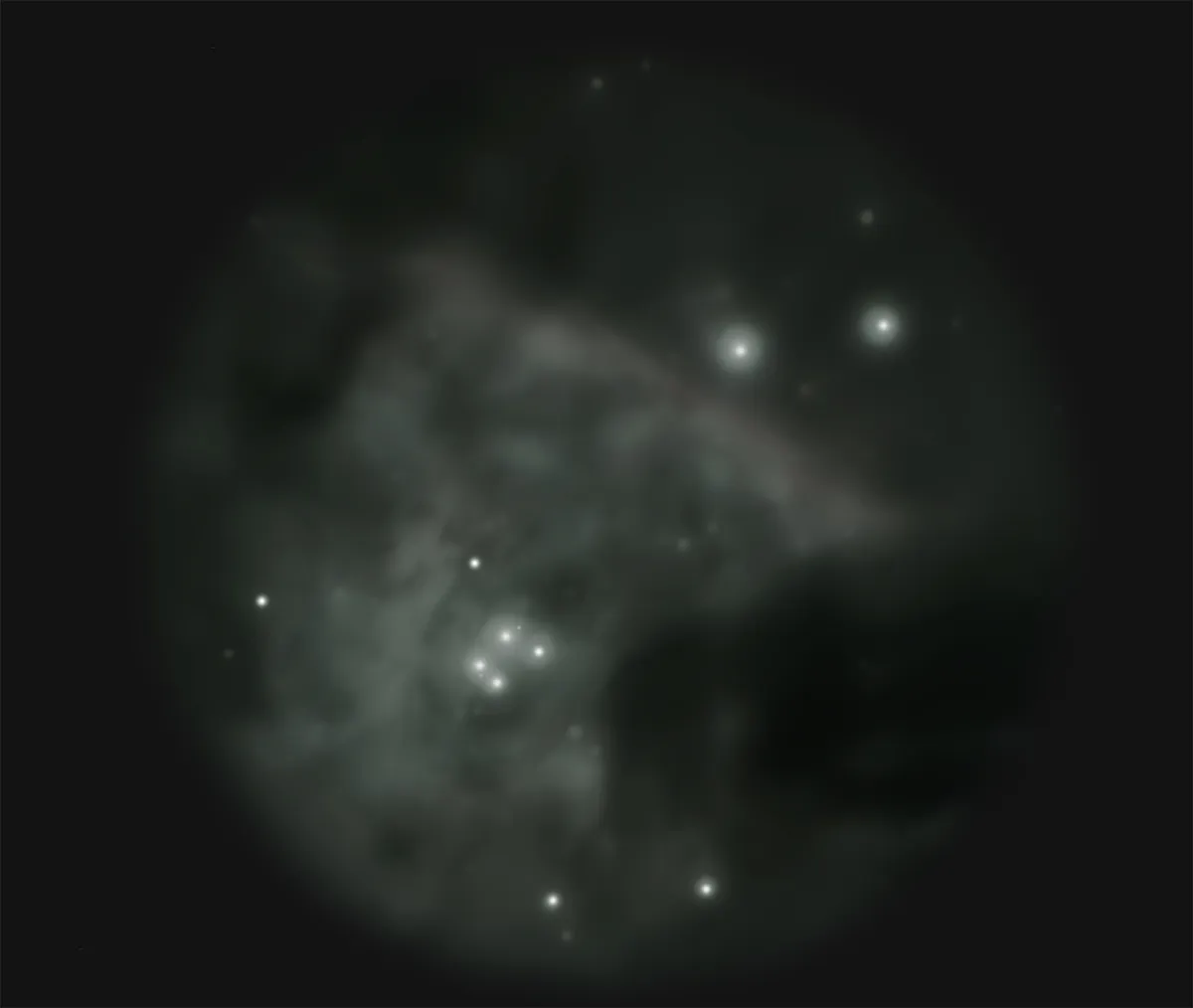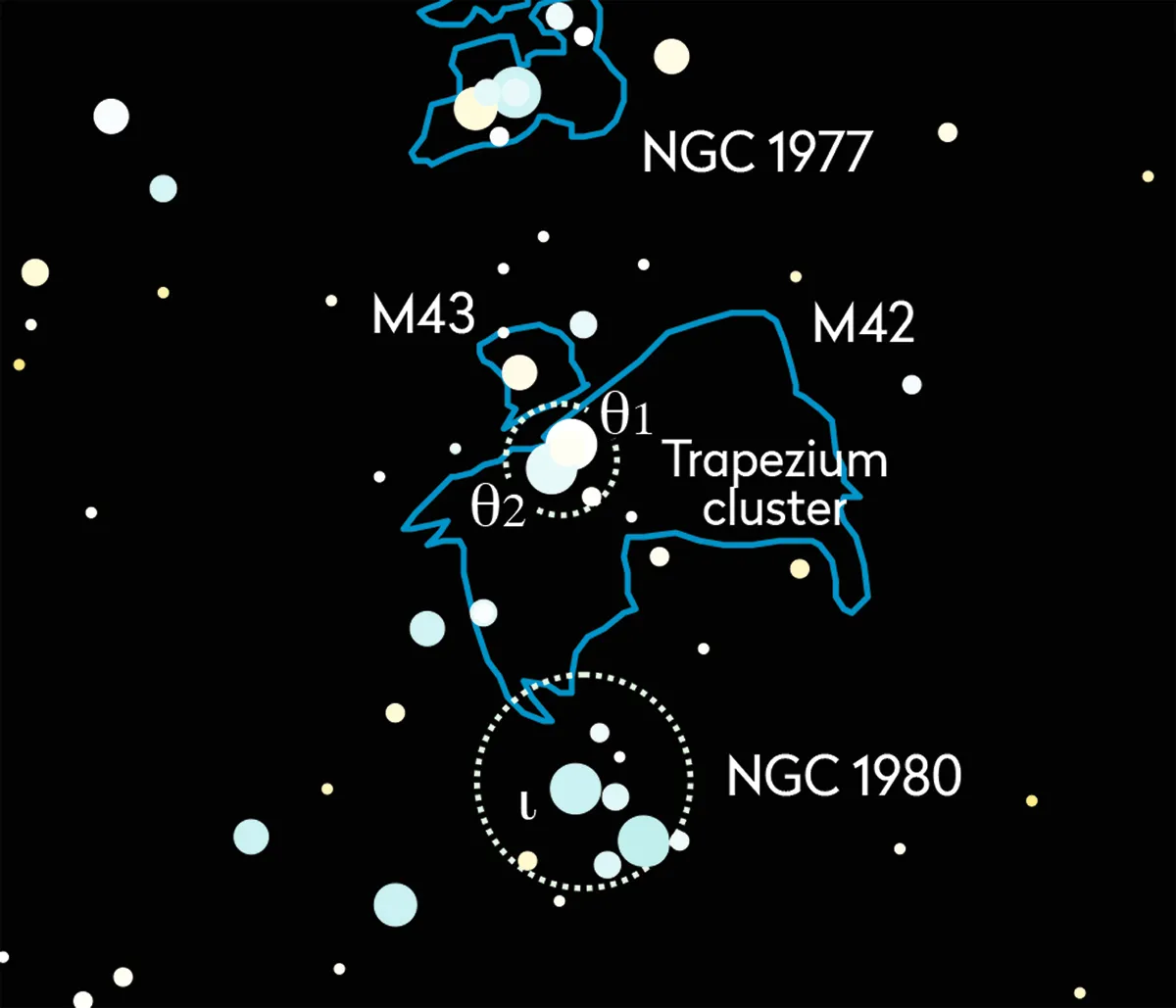The Trapezium Cluster, also known as Theta1 (θ1) Orionis, lies at the heart of the widely observed and photographed Orion Nebula, M42.
The nebula is easy to find, being located right in the middle of Orion’s sword, a line of faint stars and deep-sky objects that hangs south of Orion’s belt.
A good challenge is to try to see some of the fainter members of the Trapezium Cluster, and this is what we'll be discussing here.
Read our guide to star clusters or find out which are the best star clusters to see with the naked eye.

A small scope shows the four brightest stars that form the trapezium shape: A, B, C and D. Magnitude +5.0 Theta2 Orionis sits 2.3 arcminutes to the southeast, still within the nebula boundary.
Splitting the four component stars requires a medium to high power, but isn’t particularly difficult.
The brightest of the stars, at magnitude +5.1, is Theta1 C.Next brightest is mag. +6.7 Theta1 D.

Theta1 A is a variable star, an eclipsing binary with a magnitude that ranges from +6.7 o +7.7 repeating over a period of 65.432 days.
Theta1 B is another eclipsing binary with a 6.471-day period and is the faintest of the four, dropping from mag. +7.9 to +8.5 when eclipsed.
The letter ordering follows the convention of labelling west to east, although as we delve deeper, this guideline is broken.
The main pattern has fainter cluster stars within and adjacent to it.
The trapezium measures 19.2 arcseconds on its longest side (B–D) and just 8.7 arcseconds on its shortest (A–B).
Acting as the corner anchors of the trapezium shape, the main stars and relatively small angular dimensions can make seeing the fainter marked members quite tricky.

In alphabetical order, mag. +10.3 E is located 4 arcseconds northwest of the mid-point between A and B. F shines at mag. +10.2 and is located 4 arcseconds southeast of C.
Stars G and H are quite dim and this makes them significantly harder to identify.
Magnitude +14.5 G can be found within the trapezium itself, one-third of the way along the line from D to A.
Its position makes it hard to image as unstable seeing bloats the brighter stars, swamping G in the process.
G is a ‘proplyd’, a term describing an ionised protoplanetary disc – essentially a solar system in the process of formation.

The pair of stars labelled as H1 and H2 are easier because they sit outside the trapezium.
They are faint though, both shining at magnitude +14.5.
Locate them by drawing an imaginary line from E through A and extending it for twice the distance again.
The final challenge is a tough one. Magnitude +15.0 I sits within the trapezium slightly south of the two-thirds position from D to A. Like G, objects H1, H2 and I
are also proplyds.
Have you managed to observe or even photograph the Trapezium Cluster? Let us know! Get in touch via contactus@skyatnightmagazine.com.

